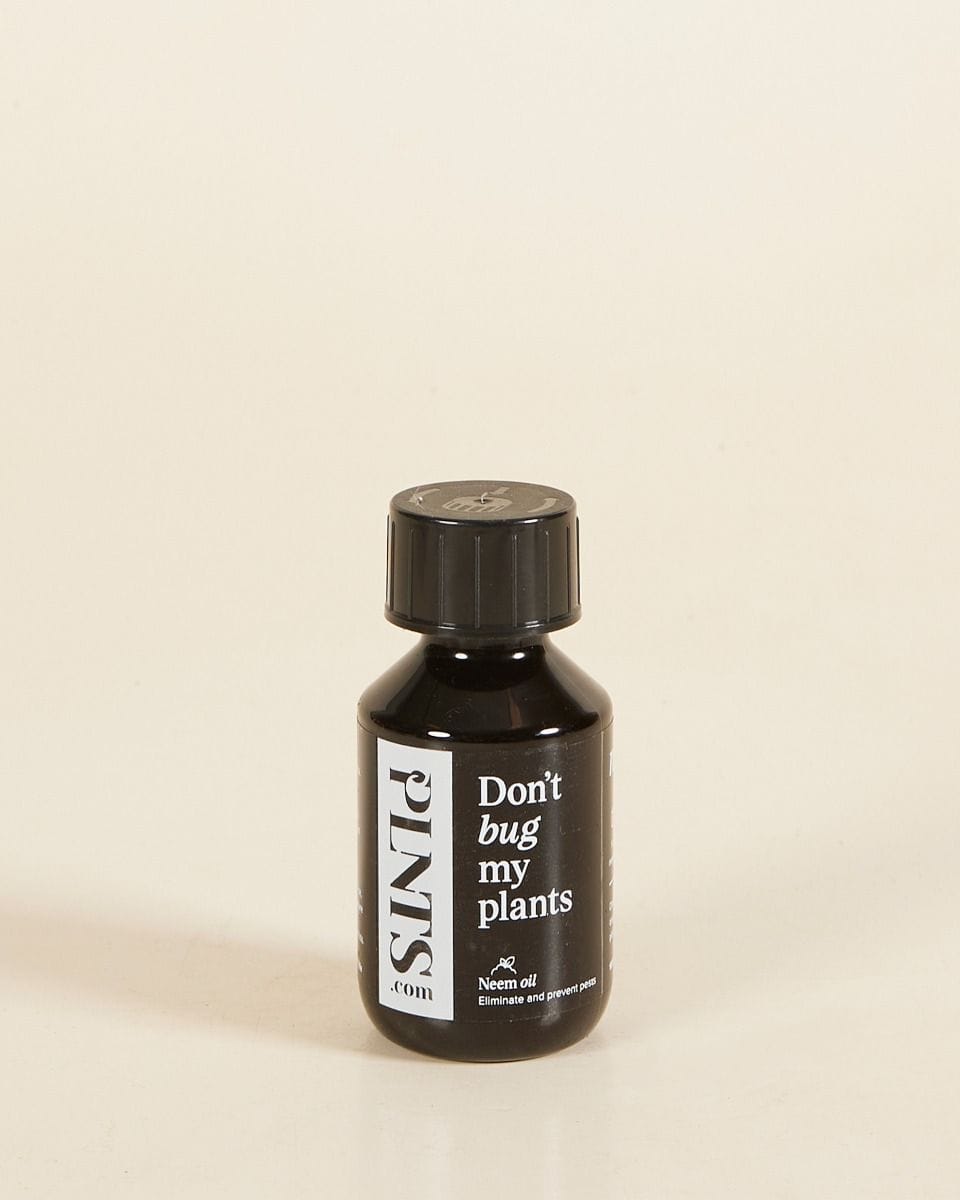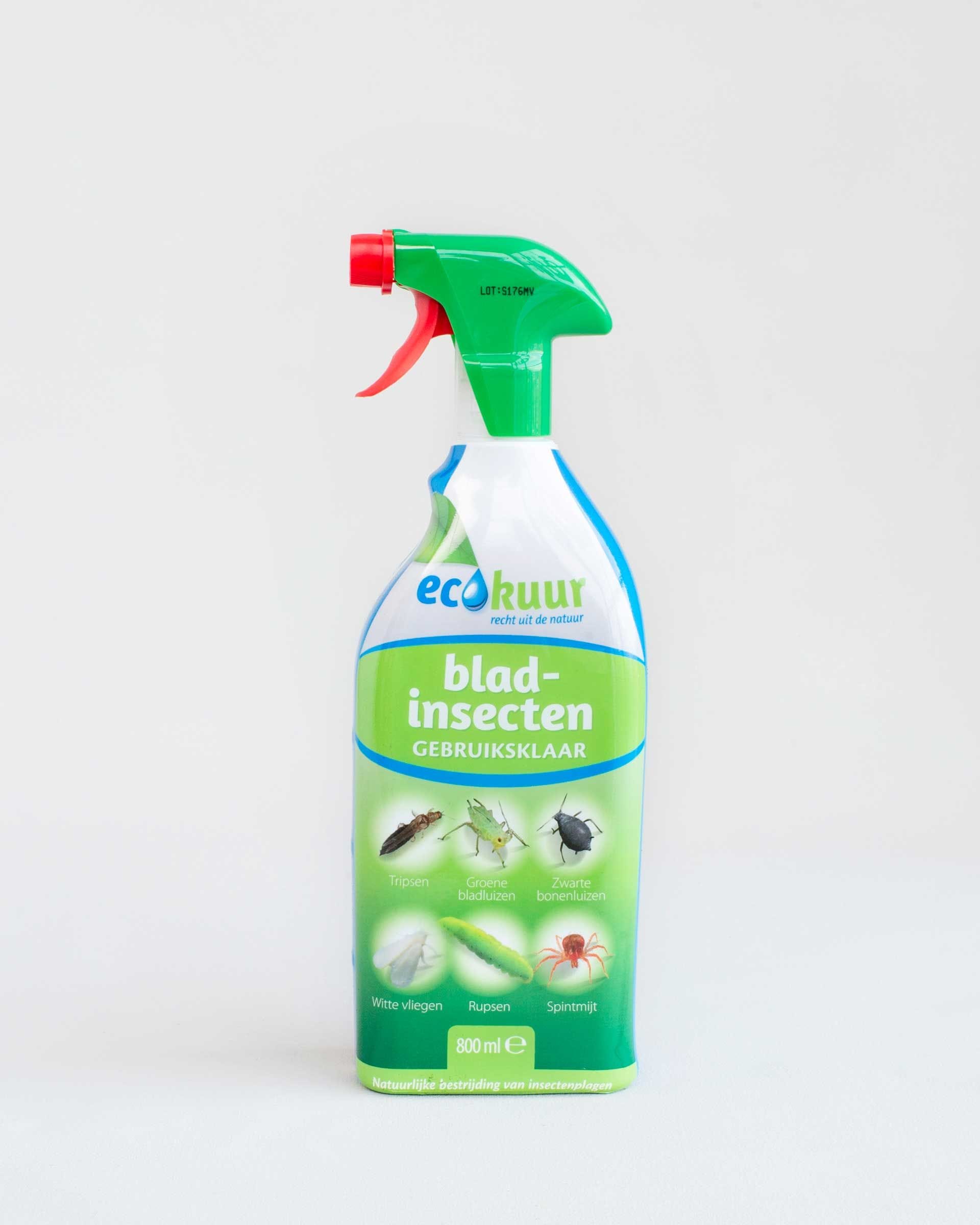Home delivery for £9.95 (no import fees)
Scale insect
Are you spotting brown, oval dots on your plant? Chances are you're dealing with scale insects! Scale insects are found worldwide in many shapes and sizes. It is a very annoying pest that is harmful to your plant and quite difficult to remove. Don't panic! Fortunately, if you can catch them in time, scale insects are easy to control and your plant will soon be growing again at full speed! Read here about what scale insects are and how you can best combat these little creatures.
What are scale insects?
Scale insects are a fairly common pest for houseplants. Like other plant pests, they feed on the sap and nutrients that run through a plant. This can cause both external damage, in the form of discoloration, and physical damage! The sap-feeding insects named for the scale-like covering they have on their bodies. There are super many different scale insects that especially target our tropical and Mediterranean plants. Due to their rapid reproduction, they can occupy large areas of the plant in no time. It is therefore very important to regularly check your plants and to recognize and properly treat a scale insect infestation.
Most scale insects are light brown or tan in color and is about 6 millimeters. Their hard, scale-like covering is not attached to the body. You can lift the shell and underneath you will find the louse. Scale insects have three distinct life stages and can produce several generations in one year. The adult females produce eggs under their scales or lay them in downy material. They lay as many as 20 to 400 eggs at one time. The scale insect is one of the few species that can reproduce both sexually and asexually. So males are not necessarily needed to produce new generations! Males also live only a few hours to 2 days. They have no mouth and their only job is to fertilize the female. Some males grow wings to reproduce even faster.
From a scale insect egg, small, six-legged caterpillars or "crawlers" emerge and move to the green and flowering parts of the plant, such as new leaves. They insert their small mouth, which resembles a straw, into the leaves or stem and suck themselves in. In this way they take in the nutrients from the plant. From their waxy droppings, a scale-like shield then forms over the caterpillars. The shield protects the aphid from other insects or pesticides. Armored females lose their legs at the first molt and thus stay in the same place for the rest of their lives.
How do I recognise scale insects?
There are super many different types of scale insects. Some have a smooth shield, which is usually black or brown, while others have a fluffy white shield. In addition to the fact that the shields of scale insects can vary in color, scale insects also come in different sizes. Most scale insects are about 2 to 3 millimeters long, but there are some scale insects that can grow up to a centimeter! Due to the fact that we import plants from all over the world, the number of species of scale insects has increased significantly. Our winters are not very cold, so most scale insects survive easily indoors and outdoors.
The most common scale insects are the brown and green scale insects of the Coccus family. The lice in this family are beige, light brown, reddish or dark brown and have an oval shape. They are up to four millimeters and less than a millimeter high. If you have good eyes, you can see them with the eye.

How do scale insects damage my plants?
Scale insects, and the eggs or nymphs of a scale insect, spread quickly and easily. This can be done through air currents, such as drafts, but also through cross-contamination. You can carry the scale insect yourself on your clothes, infecting other houseplants!
The scale insect, like other pests and fungi, targets the plant's nutrients. They were usually found on the underside of the leaves and on the stem. By biting its way into the veins of your plant, the scale insect can suck up the nutrients with its snout. Of course this does not make your green friend happy, because she needs those nutrients herself in order to grow and bloom! Scale insects often affect older, mainly woody and tropical plants. Do you have a Ficus, Monstera, Fern or Palm tree in your house? Then watch out, the scale insects love these plants!
Scale insects sit together in dense clusters and form thick crusts in your plant. While sucking up nutrients from the plant, a scale insect injects a toxic substance into the cells of the plant. This causes yellow, red or brown spots on the leaves or causes the leaves to deform, stop growing or even fall out.
The nutrients that the scale insect slurps up are rich in sugar, but otherwise there are not many nutritious substances in it. Therefore, scale insects need to drink super much juice to get enough nutrients. They excrete these excess sugars in the form of honeydew. A sticky substance that fungi grow very well on. Besides making the plant sick with fungus, it also doesn't look very attractive.

How can I prevent scale insects?
Unfortunately, you cannot prevent your plant from being infested with scale insects. However, you can take a few precautions to reduce the chance of this persistent pest. Scale insects travel with the wind and can also sit on your clothes. This makes us, unknowingly, the biggest spreaders of the pests! You should also make sure to inspect new plants, pots, or plant tools before you use them on your plantlets. Unfortunately, no matter how careful you are, there is still a chance of scale insects.
Care
A well cared for and healthy plant is the best protection against diseases and plagues. Therefore make sure that your plant is in the right location, receives the right amount of light and water and once in a while give it some extra plant nutrition. To protect your plant against scale insects you should also make sure that your plant is not in a draught. Scale insects blow with the wind and see your green houseplant as the perfect runway! If an infestation of scale insects should occur, your plant will be well cared for and strong enough to survive the attack. Cuttings and young plants often do not have enough strength to withstand an attack on their delicate roots. If you suspect that you have a scale insect infestation, keep a close eye on it and intervene as soon as possible!
How can I control scale insects?
The shield of the scale insect ensures that they are super well protected against attacks by natural enemies, but also against pesticides. In addition, they also reproduce rapidly. In no time, your plant will have a scale insect infestation. To control scale insects successfully you will need some perseverance, but your green friend will be super grateful! The best way to control scale insects is without pesticides and by using the natural enemy of the scale insect. The larvae of ladybugs will quickly gobble up about four hundred aphids a day, not to mention an adult ladybug will eat about five thousand! Of course, this is not helpful when your plant is indoors. When natural enemies are not an option to control the scale insects, the best and most effective solution is to remove the insects manually. It can be quite a chore, but by picking the scale insects off the plant, the infestation can be controlled without pesticides. You can also use some water and a brush if necessary. Don't feel like manually removing all the lice? There are also a number of other methods that will help control a scale insect infestation.
Fighting scale insects with ice water
Every morning, spray the plants with ice cold water. Scale insects are not fans of the cold and will eventually die out as a result because they no longer reproduce. It takes some stamina and discipline, but the result is a very happy plant!
Fighting scale insects with decoctions
This way is easy and effective. During your afternoon walk, pick a good bunch of nettles (with gloves) and slice a few cloves of garlic. Then fill a bucket with about a liter of water and let the nettles and garlic soak for three days. Then pour the water into a plant sprayer and spray the plant with the infusion. Repeat until you see that the infestation gets smaller and eventually disappears.
Fighting scale insects with green soap
A little less environmentally friendly, but also effective. Fill a bucket with a liter of lukewarm water, 25 grams of green soap and 30 milliliters of methylated spirits and mix well. Put the mixture in a plant sprayer and spray the plant with it. Repeat this until you see that the infestation gets smaller and eventually disappears.
Fighting scale insects with neem oil
Neem oil is a wonder drug against almost every kind of pest. Mix the oil with water and detergent and spray this on the plant. Repeat until you no longer see the mealybug. This may take a few days. Stubborn spots can also be touched up with neem oil and a cotton swab.
Is the infestation super stubborn? Then get to work with the Ecokuur Leaf Insect Spray. This ecologically sound product is perfect for eradicating scale insects and other pests. Spray the product homogeneously over the plants where the insects are found. Also treat the underside of the leaves to hit as many insects as possible. Spray 3 times a week on the plant and then wait a week for the result. Is the infestation still not completely resolved? Then repeat the steps!
PLNTS hacks against scale insects
If you search online for the best way to control scale insects you will come across a huge number of options. It is good to know that there is not one specific method that works for everyone. For some plants one way works better than another. It's a matter of trying!
Below you will find a number of alternative hacks that will help you fight scale insects.
Olive oil
A home, garden and kitchen tip to combat scale insects is with olive oil. Touch the lice with a cotton swab dipped in olive oil. The oil will cause the breathing tubes of the louse to be closed, causing the louse to suffocate. Continue to monitor closely and repeat as needed.
Pruning
Not the most fun, but sometimes the most effective way to get rid of the scale insect. Cutting off infected branches is often the easiest and surest solution when you see the infestation. Inspect the plant, and other plants, thoroughly to make sure you have removed all infested stems. Put the infected stems in a sealed bag in the trash, and don't forget to clean your pruning shears well, too!
Alcohol
If the infestation is light, disinfecting alcohol can help kill it. The best way is to put the alcohol directly on the scale insect with a cotton swab. It takes some time and energy, but the results should be visible in no time. Repeat every 2 to 3 days until the problem is solved!

